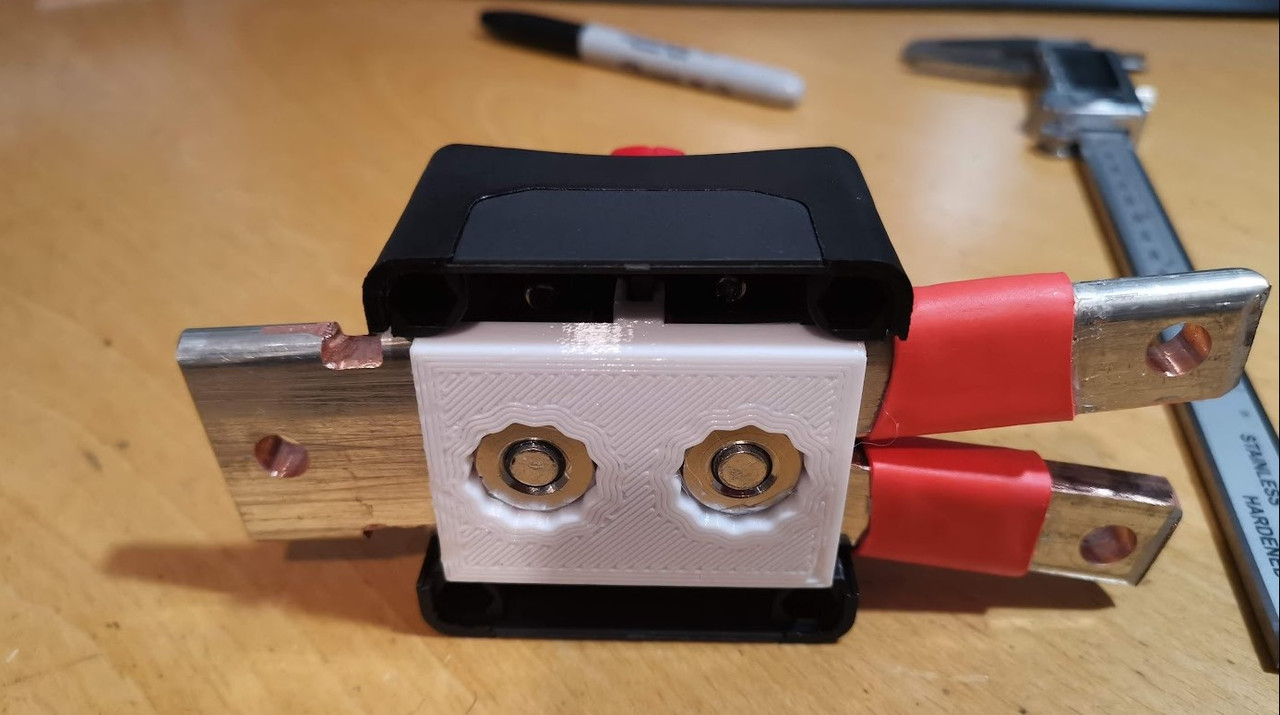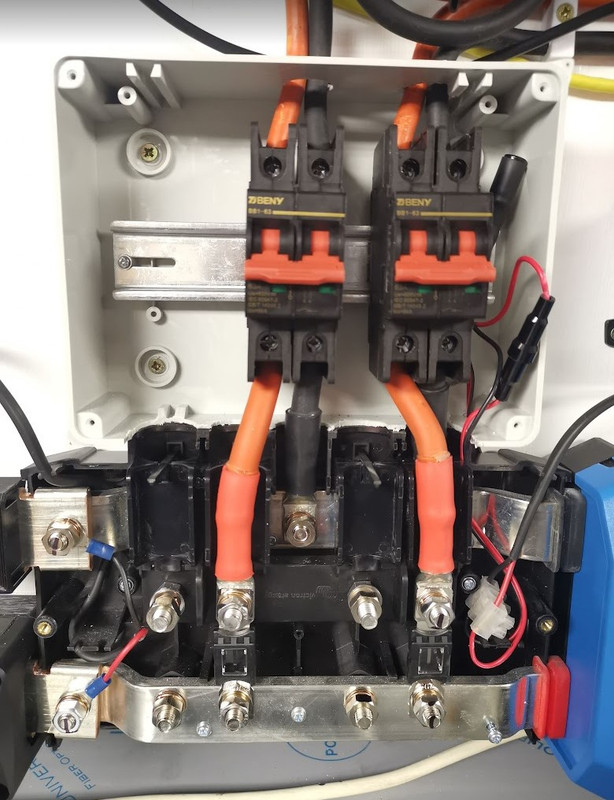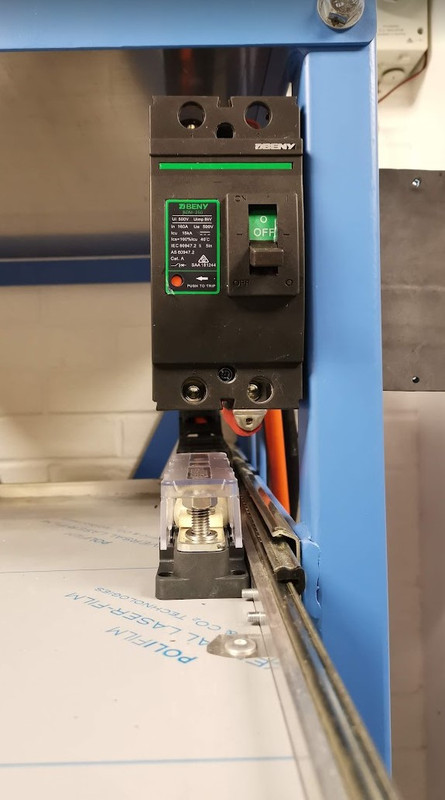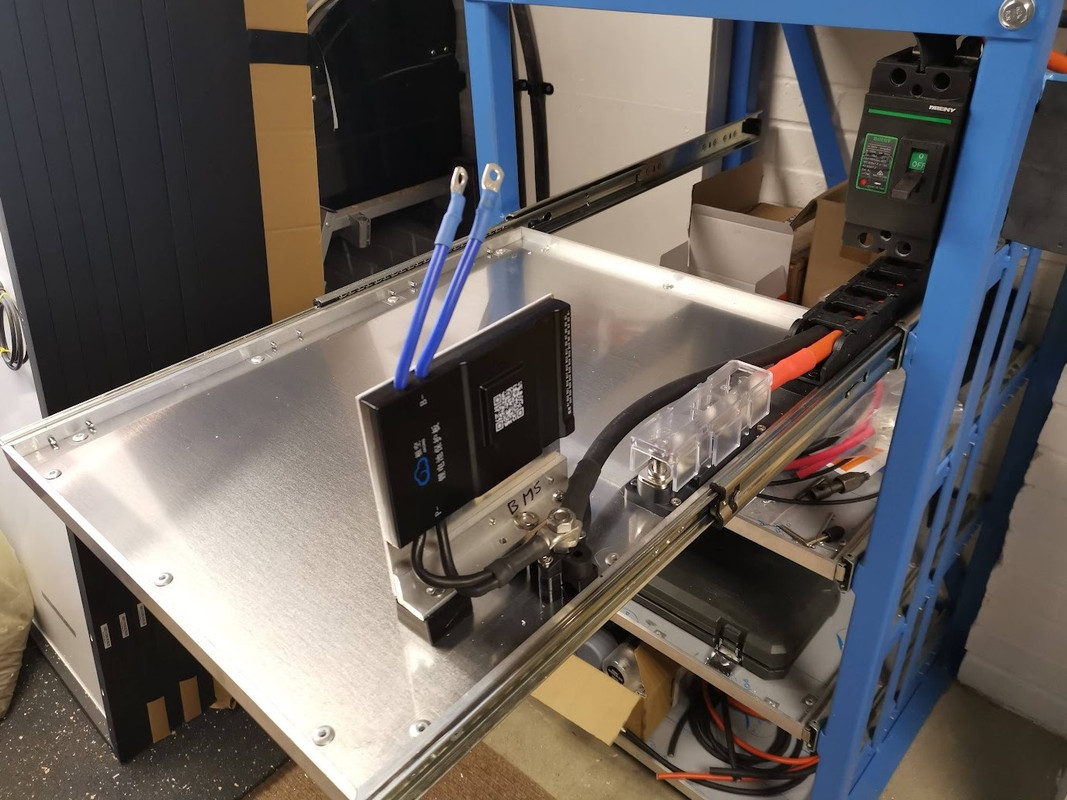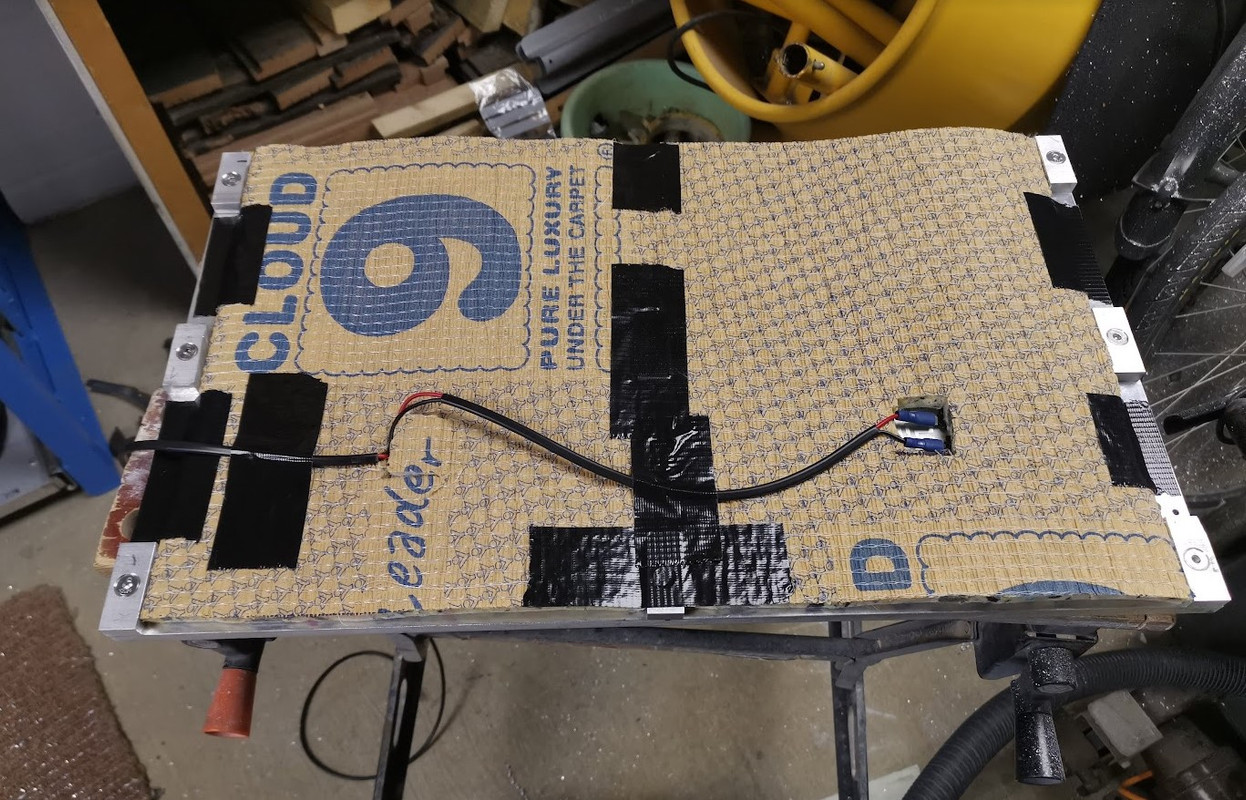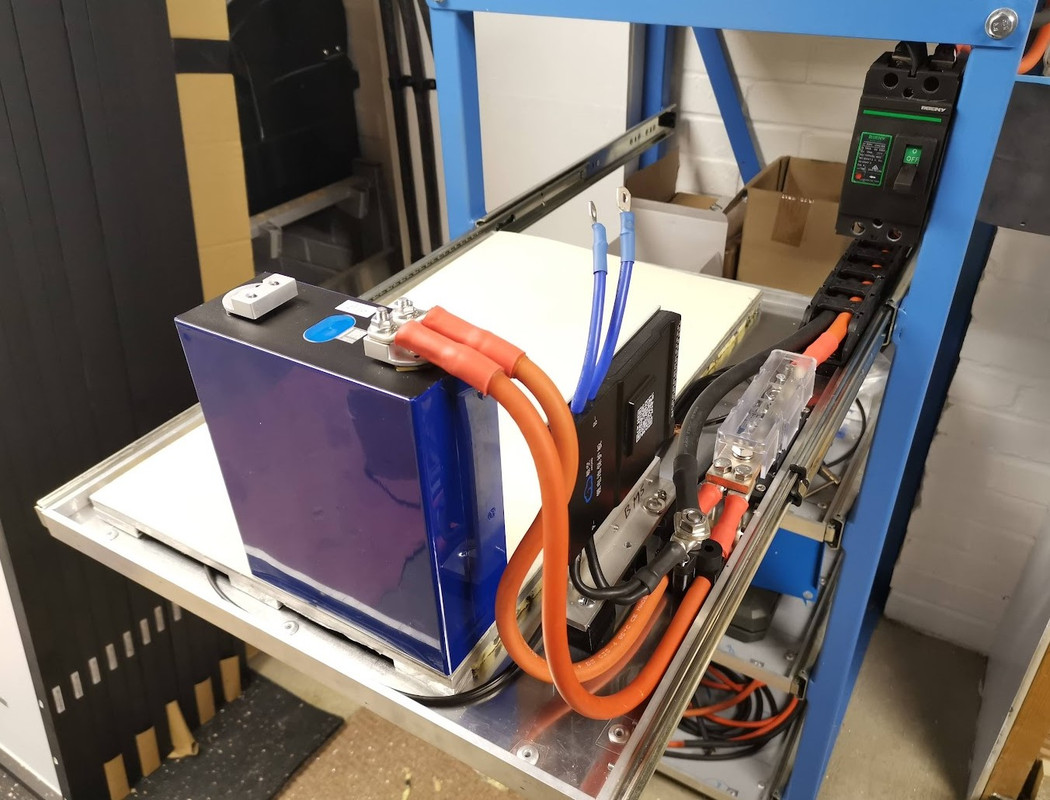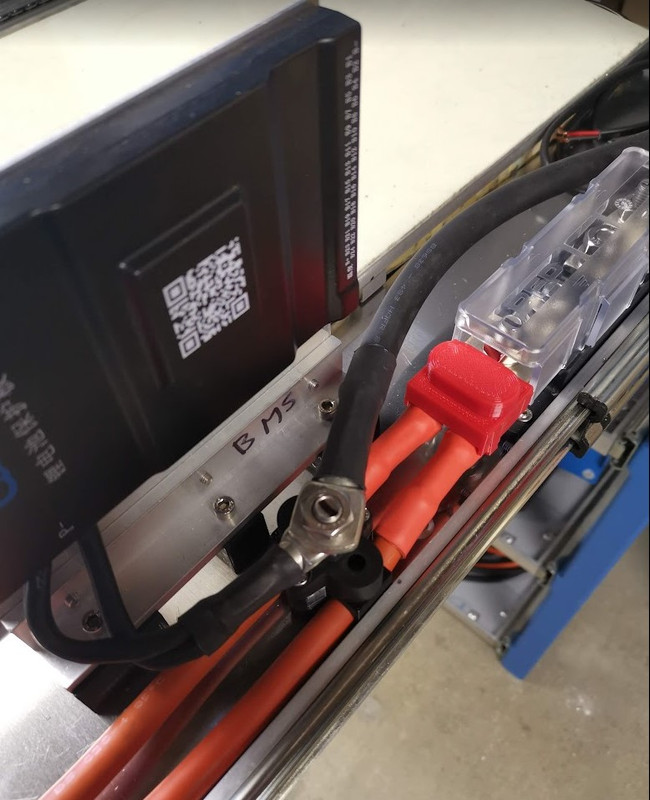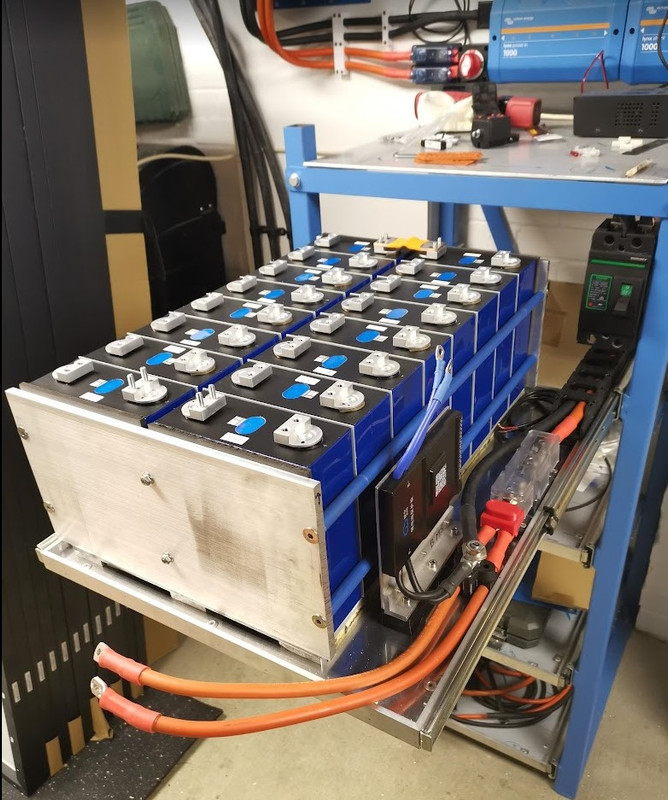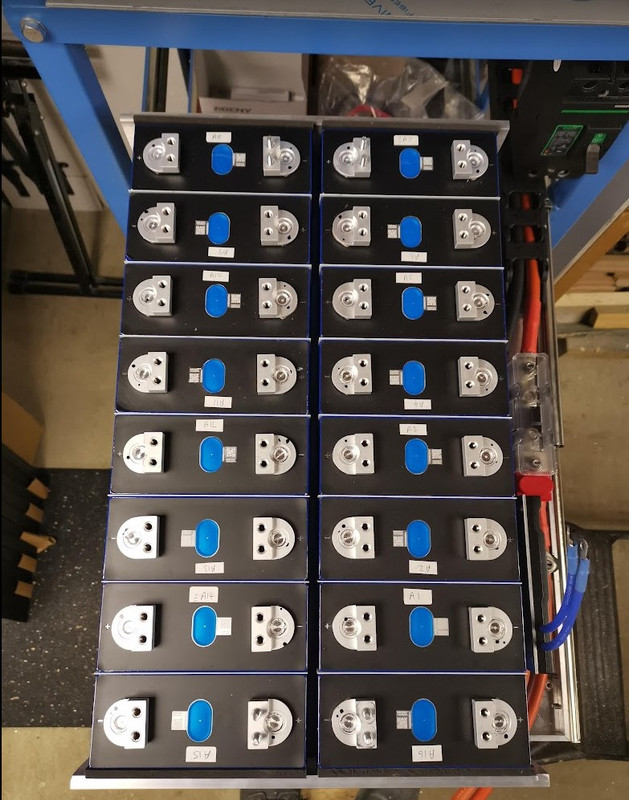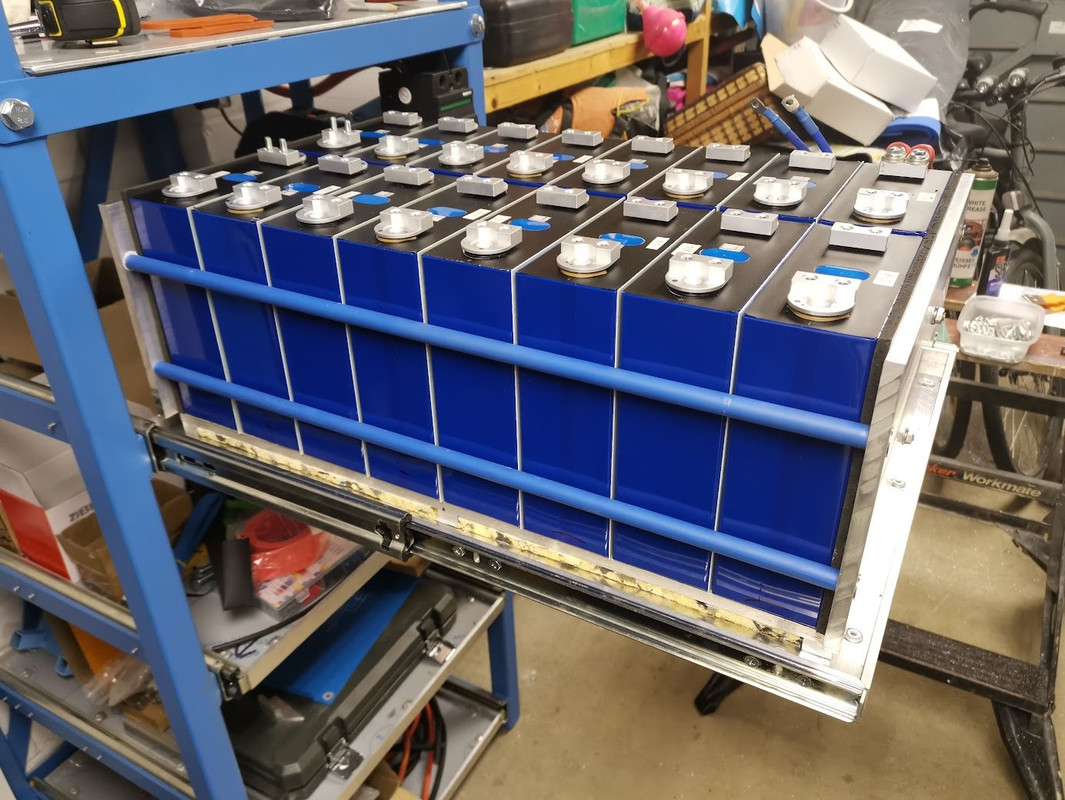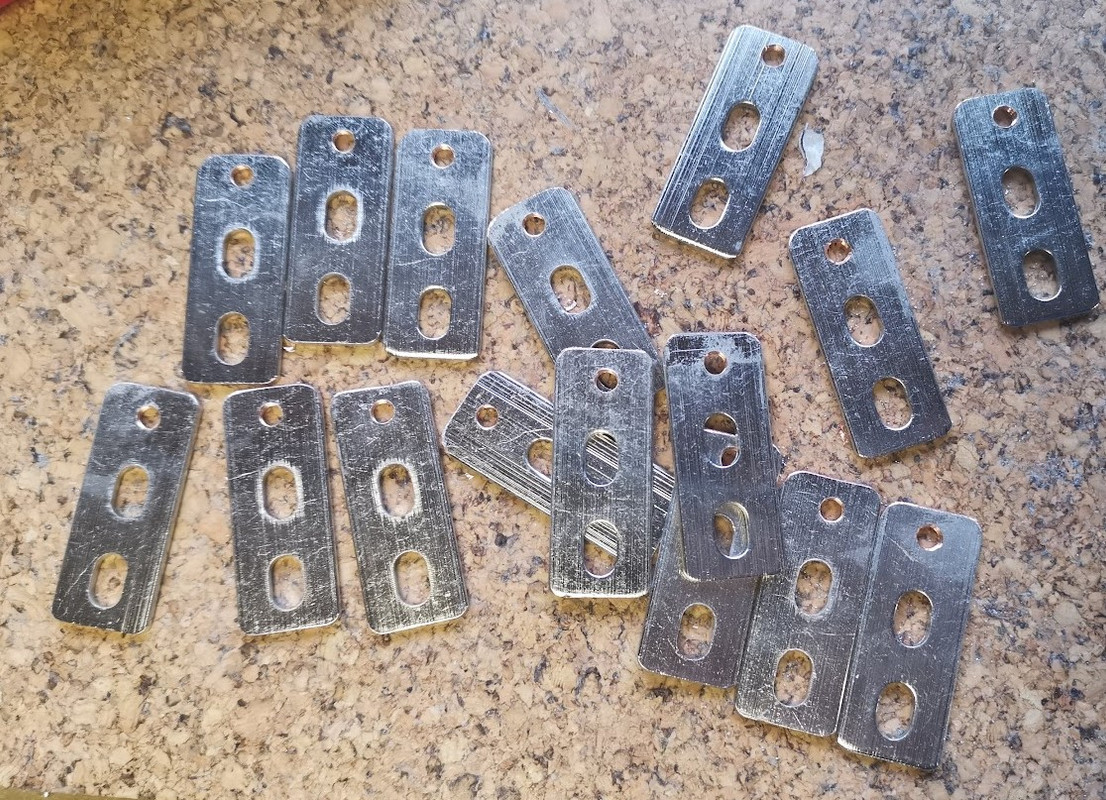Good productive weekend, although I did find a design flaw, but more on that later.
This is one of the two 70mm negative cables to the inverter, I measured the resistance and both were 0.31 milliohms
Cables run in to the inverter
And where they join to the fuses and isolator. The small wire to the right of the isolator needs a fuse adding, this will go to the precharge circuit.
3D printed a clip on cover for the negative connection.
And a bigger overview picture. The small cable coming out the top left of the Lynx Power in will be for the precharge circuit.
Next up was connection for the MPPT MCB's to the Lynx Power in. This was rather tricky as I had decided to use 35mm cable, I could have used 16mm but didn't have any lugs, so 35mm it was, and it was rather tight, just no room, and very short distances, but it fitted.
I cheated on the negative for the left MCB, it should go behind the positive, but it was just too tight, electrically it makes absolutely no difference.
To save on time and as currently I only have one battery, I've fitted the 70mm cables from the top shelf breaker directly to the Lynx Shunt. When I add the second battery, these cables will simply unbolt and connect to the battery rack busbar.
Here's a 90 degree crimp on 70mm cable.
Positive cable run from the breaker to the T class fuse.
Now this is when I spotted the design flaw, I put the lid on the T class fuse and slid the tray closed, and thought that's a bit of luck it just misses.
But then I realised I still need to connect the negative, and that will not miss!
It's only about 3mm, so I'm going to elongate the mounting holes for the breaker mounting plate, this should allow the breaker to mount about 5mm higher, and then it will clear. Hopefully that works, otherwise I need to alter the brackets, or the riv-nuts in the frame.









